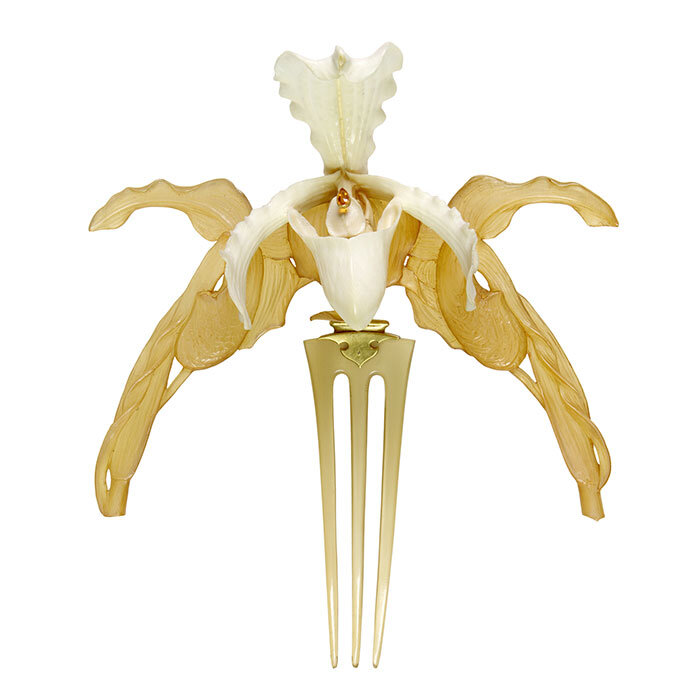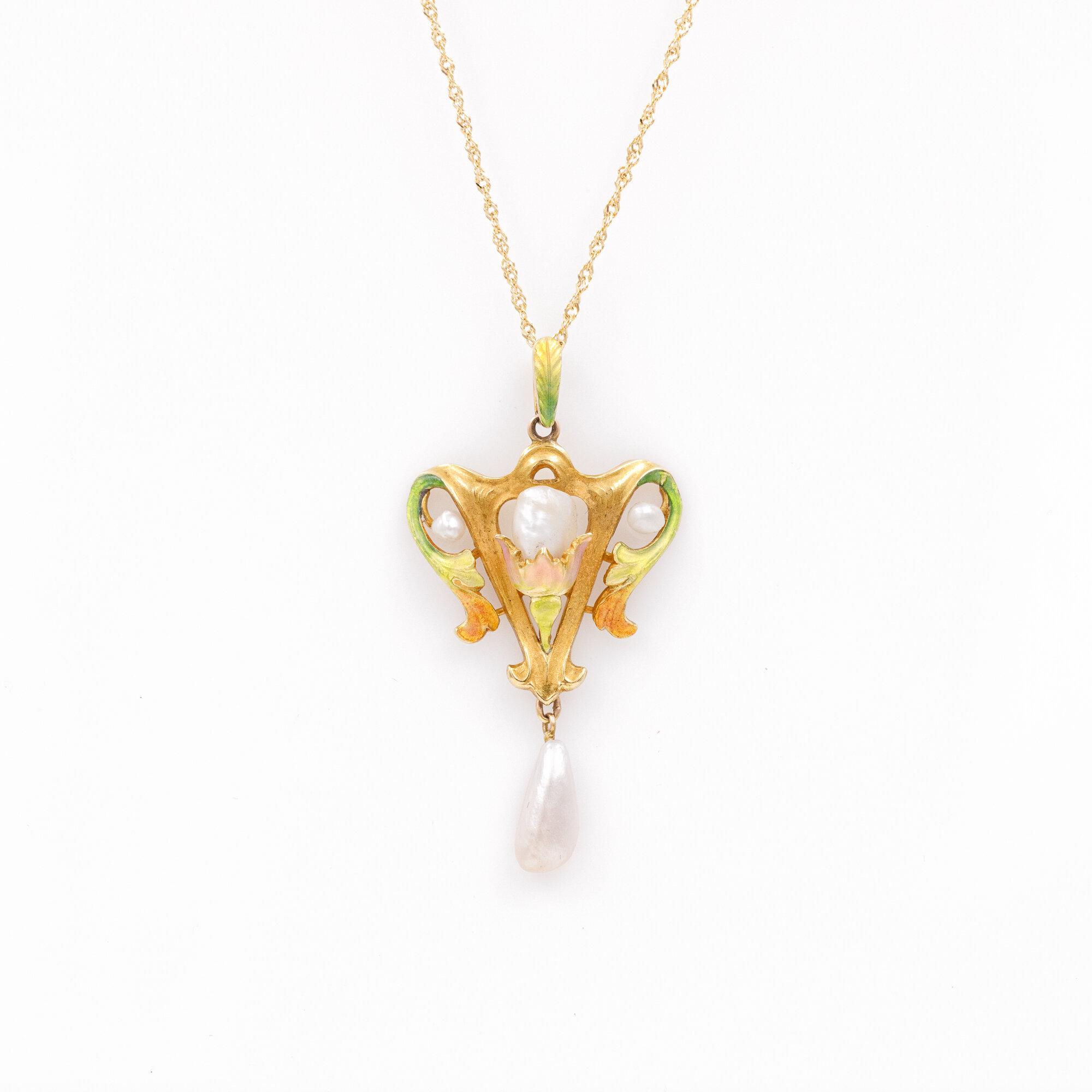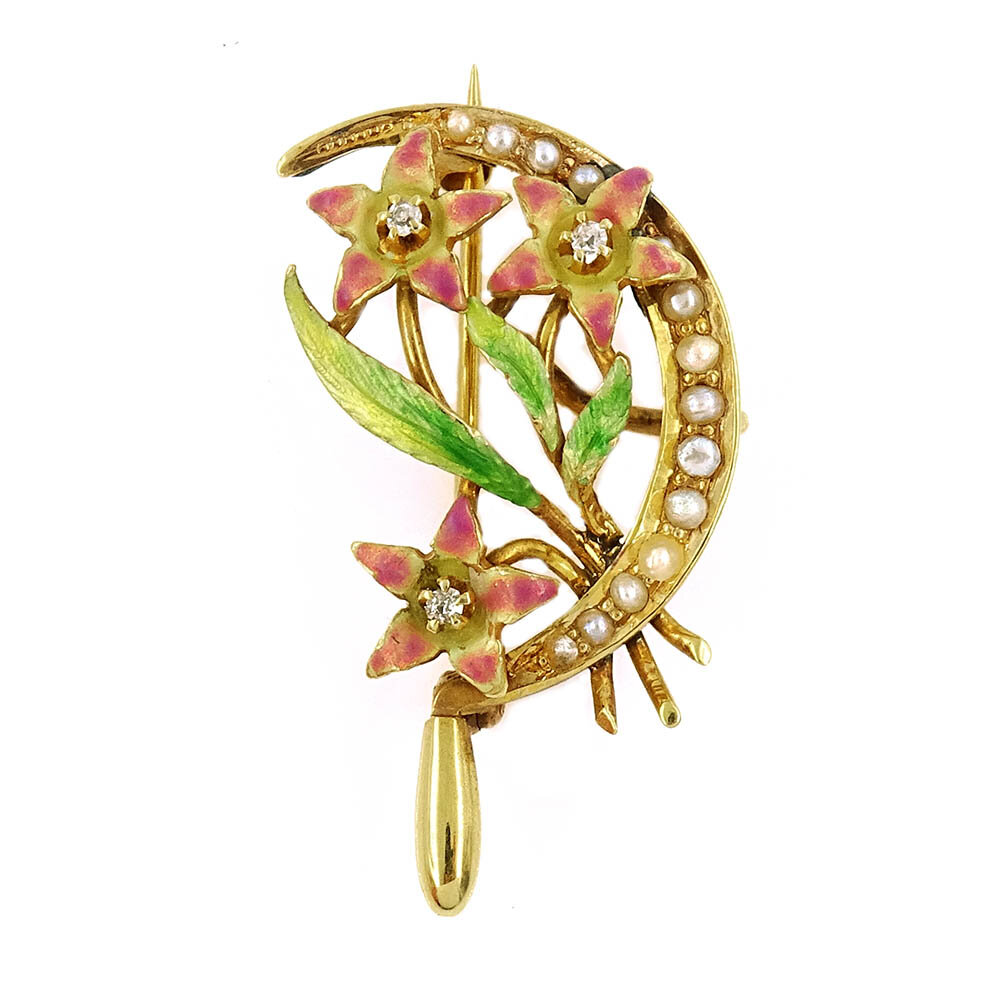The World of Art Nouveau
Picture yourself in Paris, 1899.
You’re traveling down a cobbled street, surrounded by passing horse carriages. Around you, you notice stylish French ladies in wide-brimmed hats and swishing skirts walking hand in hand with gentlemen in tailored suits. On the corner, a metro entrance is heralded by a twisting wrought iron gate. You look up to see a brand new electric streetlight buzz to life, and farther in the distance a giant brightly lit sign advertising the showgirls of the Folies-Bergere and the Moulin Rouge.
It’s the turn of the 20th century, and Paris is the world’s center of art and design. The city will soon host the Exposition Universelle in 1900, thrusting the art movement known as art nouveau into the spotlight and setting the stage for famous designers of this era such as René Lalique, Hector Guimard, and Alfons Mucha.
Art Nouveau design was in its heyday from 1890-1915. Characterized by themes of nature and fantasy, flowing lines and opulent curves, and influences from Japan, the Art Nouveau movement is a representation of the wealth and opulence of the late 1890s and early 1900s in Europe.
In particular, Art Nouveau jewelry is a remarkable departure from the Victorian designs of the 19th century. Rather than continuing with the gothic and bold jewelry designs of previous decades, designers of the Art Nouveau era instead chose to implement delicate, sinewy curves and use colored gemstones and enamel to create pieces that conveyed the natural forms of flowers and insects.
Heralded designers of this age like Lalique created pieces for the most famous women of the era to wear, the most notable being singer Sarah Bernhardt. Because of the art movement’s striking uniqueness compared to the decades prior, Art Nouveau pieces were seen as high art, to be worn by the elite women of Parisian society. However, as with most modern art and design movements, its popularity became widespread, and soon the features of Art Nouveau jewelry could be seen in almost every jeweler’s shop window.
Shop Our Collection
Sources:
Collectors Weekly - Art Nouveau Jewelry
National Jeweler - The History Behind Art Nouveau Jewelry
Christie’s - Collecting guide: Art Nouveau jewellery
Lalique.com - Lalique timeline










